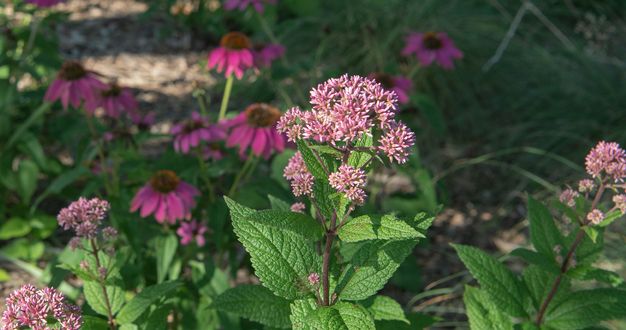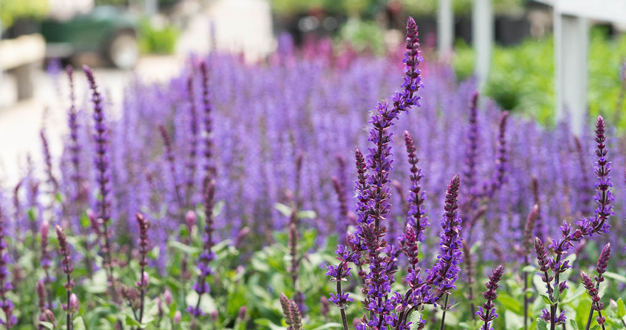
Few flowers inspire our admiration like the rose. Long symbolizing beauty, romance, and ever-lasting love, roses remain one of the most diverse and popular landscape plants. In our specialty rose collection – including hybrid tea, floribunda, grandiflora, and climbing roses – you’ll see just how diverse these beautiful plants really are.
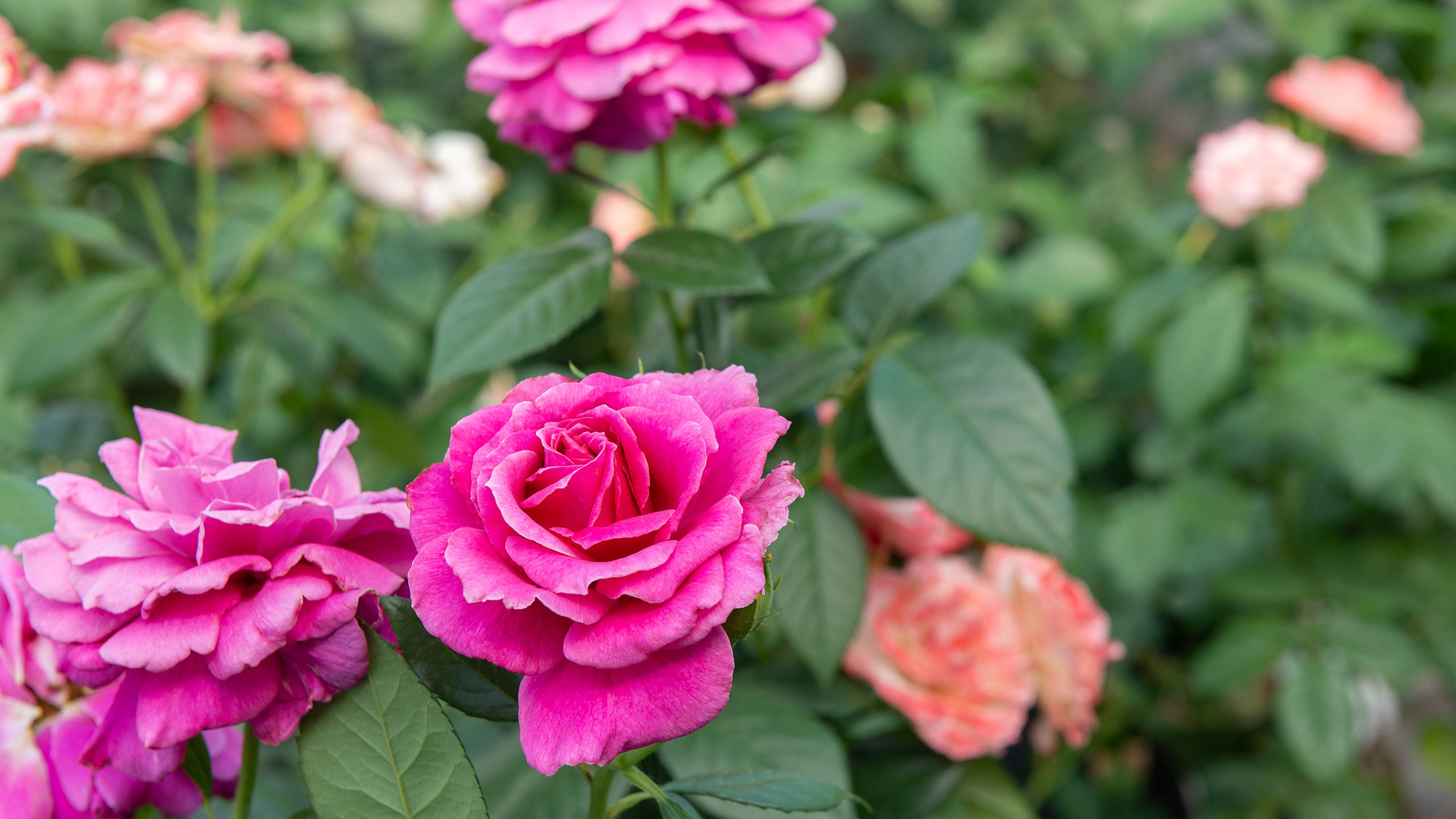
Hybrid Tea
Hybrid tea roses are the oldest of the modern hybridized roses – the first cultivar, ‘La France,’ appeared in 1867. Hybrid tea roses are often what we imagine for a classic rose used by florists. Their large, high-centered blooms are made up of dozens of petals and are held on tall, upright stems. They come in a wide range of colors from bright pink – like ‘Pretty Lady’ – to warm reds, oranges, and yellows, whites, and even purples. And hybrid teas are often named after famous figures or have fun cultural references– such as ‘Just Joey,’ ‘Peace,’ ‘Veteran’s Honor,’ and ‘Mister Lincoln’.
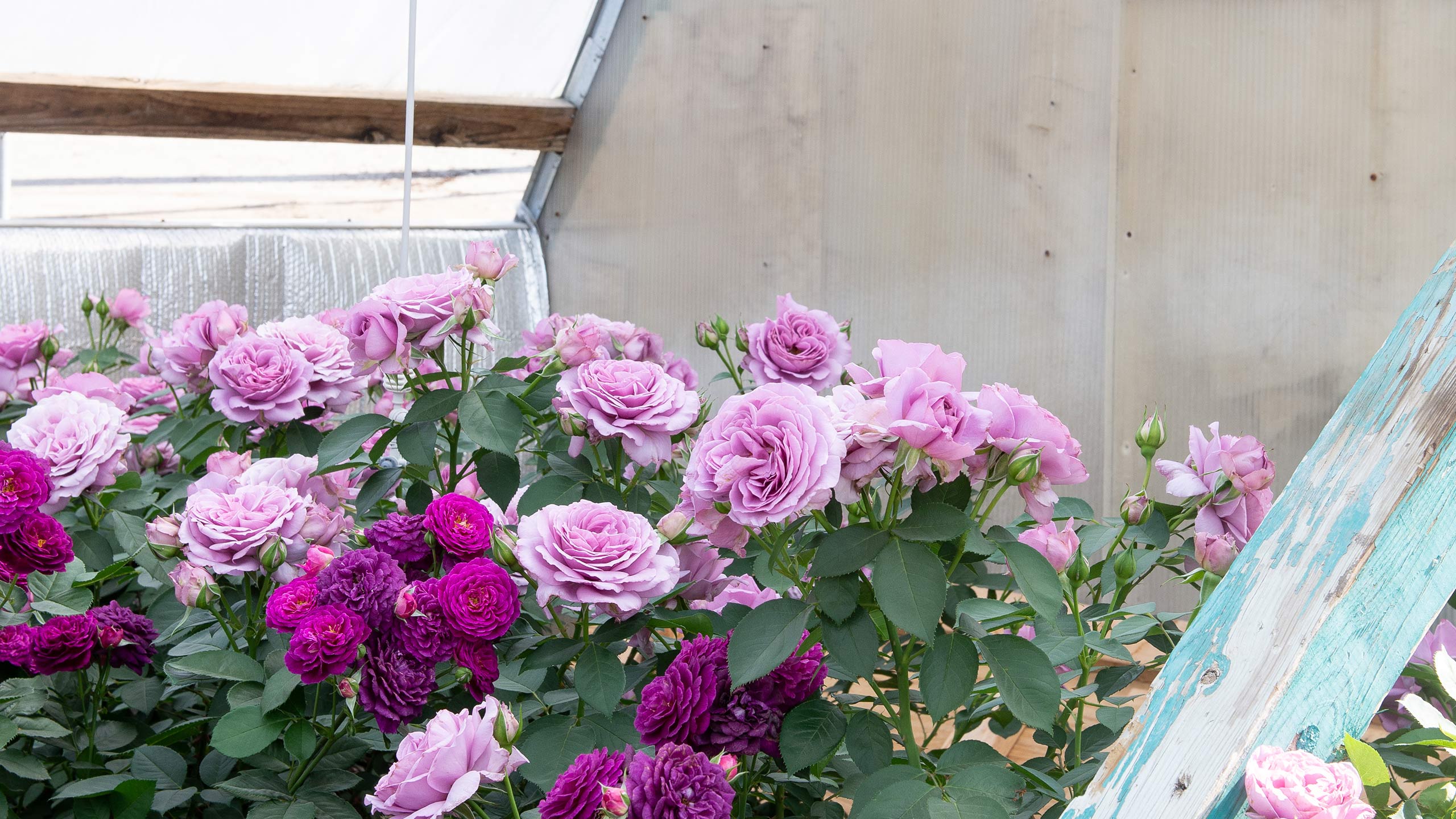
Floribunda
A second class of modern roses was born in the early 20th century when rose breeders crossed hybrid teas with a group called polyantha roses. The result was dubbed floribunda – meaning “many-flowering” – because the blooms mostly appear in clusters. Like hybrid tea roses, floribunda roses come in an ever-growing variety of colors – some even with stripes, blotches, and artistic shadings on the petals. In the floribunda roses, look for ‘Doris Day,’ ‘Iceberg,’ and ‘Angel Face’ – a fascinating rose with varying swaths of red and gold on each scalloped petal.

Grandiflora
Grandiflora roses were the third wave of modern hybrid roses, produced by crossing floribunda roses back to hybrid tea roses. Grandiflora roses are very similar to floribundas in that they produce clusters of multiple blooms – but the extra dose of hybrid tea in their heritage means you see a fair number of blossoms on single stems too. Grandiflora cultivars are often – but not always – larger plants than either the hybrid teas or the floribundas. Examples of grandiflora roses in our collection include ‘Queen Elizabeth,’ ‘Rock & Roll,’ and ‘Strike It Rich.’
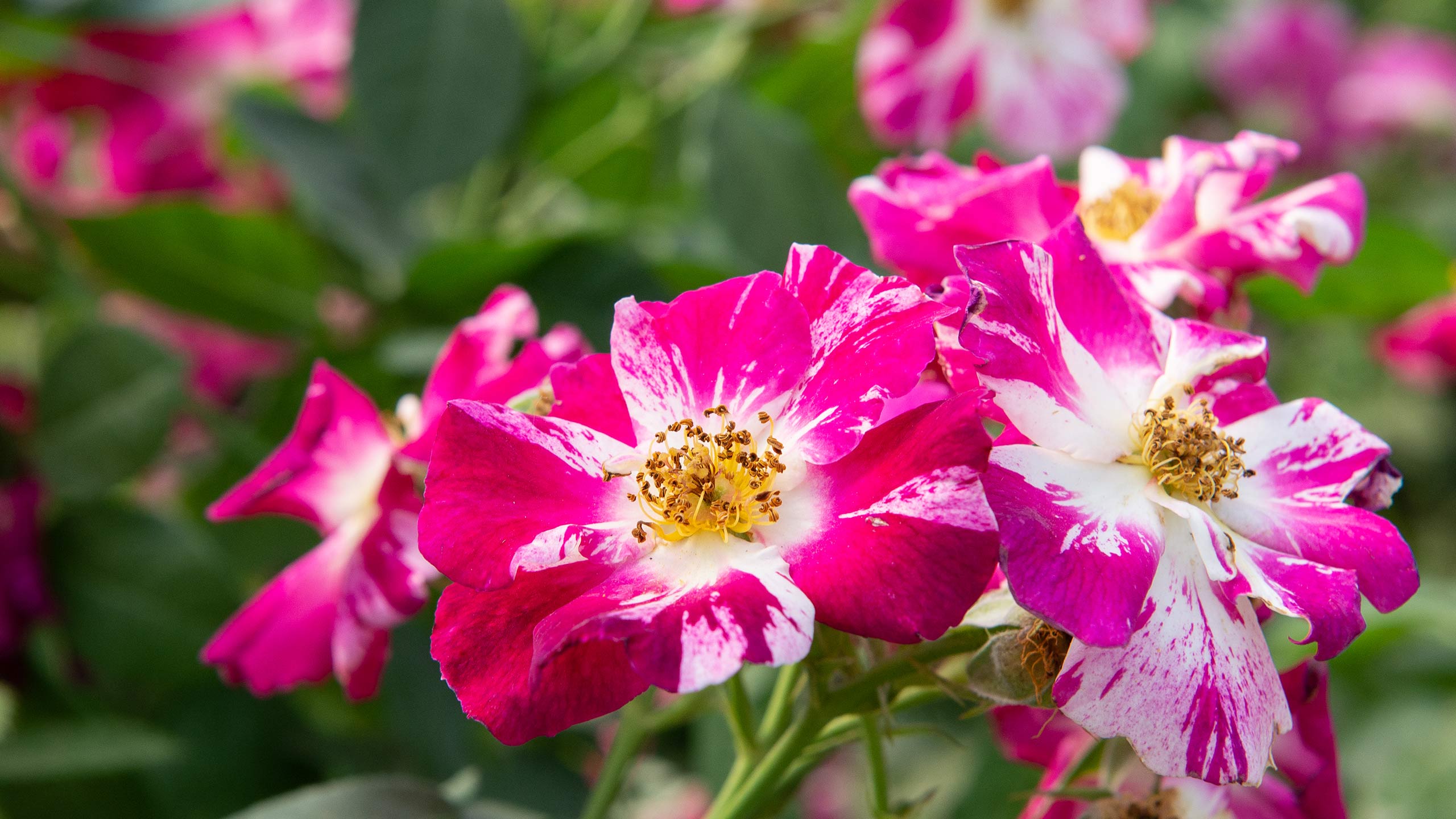
Climbing
Climbing roses have exceptionally long and flexible canes that are easily trained to grow along a trellis or arbor. Rather than being a separate class of hybrid rose, the different cultivars of climbing roses arose spontaneously from mutations within each of the other classes. So, you can find climbing varieties within the hybrid teas, floribundas, or grandifloras. Examples in our collection include ‘Blaze Improved,’ ‘Joseph’s Coat,’ and ‘White Dawn.’
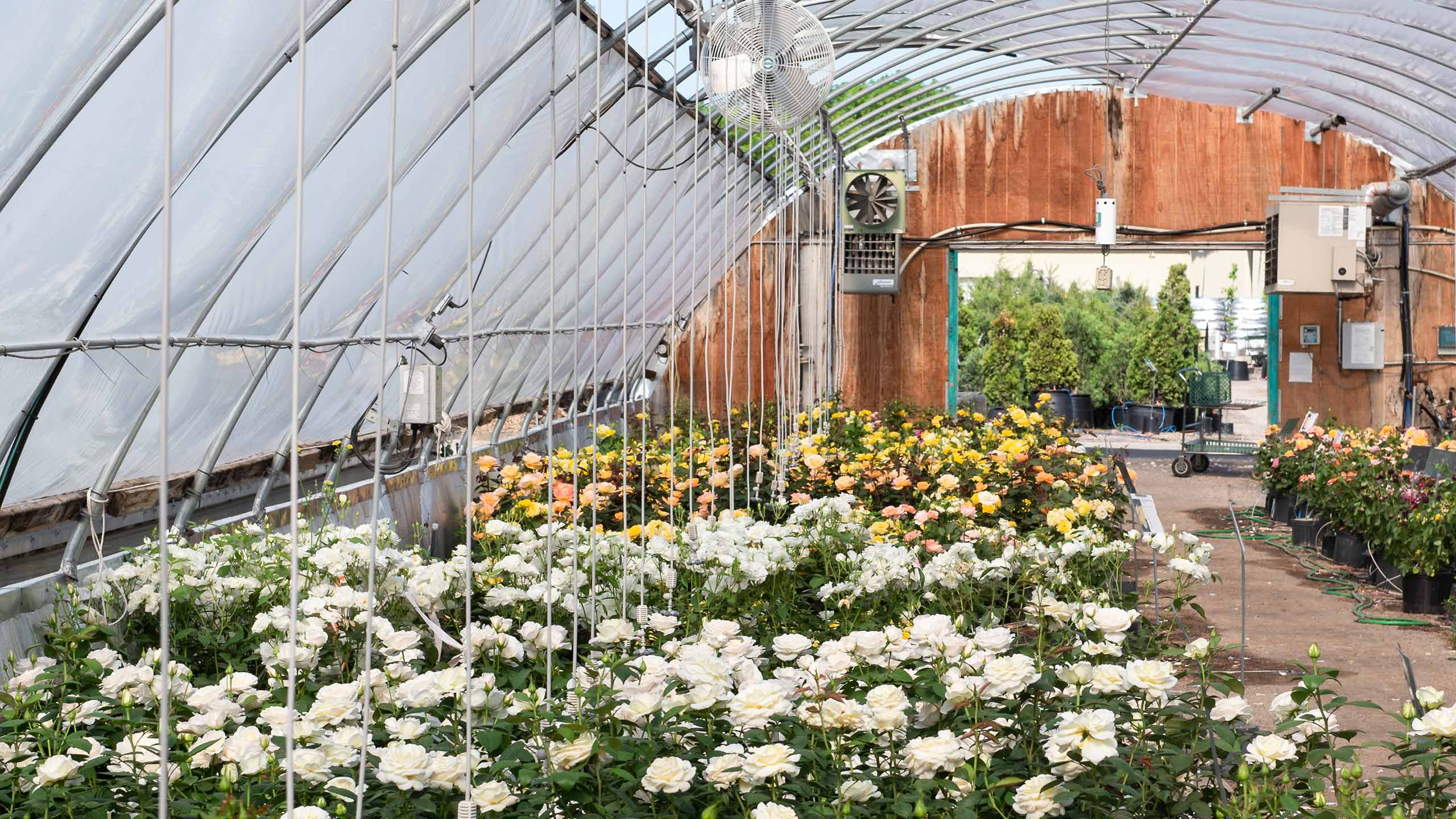
Specialty Roses and Winter Care
Specialty roses are a beautiful and popular addition for the landscape, but because these classic roses are also sensitive to our variable Nebraska winters, they aren’t necessarily guaranteed to come back each spring. Another group of roses – called shrub roses – have since been developed to be more cold hardy and low-maintenance, but with just a little extra effort, rose-lovers have still found success keeping all kinds of roses thriving for many years.
Here are some of our best tips to improve your chances for long-term success with specialty roses:
- For strong, healthy roses, choose a bright location with sun all day long, protection from cold north winds, and exposure to the warmth of the winter sun – the south side of the house is usually ideal.
- Fertilize regularly and treat any diseases or pests as soon as you notice a problem.
- When planting, it’s important to look for a flared point at the base of the stem – this is where the selected rose cultivar was grafted onto a more vigorous root stock. This point should be one inch below the soil, but no deeper. This will protect the graft point from extreme temperature changes in the winter. And with that extra inch of soil, it’s also possible for new stems to self-root near the base, resulting in a stronger, more reliably blooming plant. This approach differs from past recommendations, but as we learn more, we adapt our methods.
- For more insulation during the winter, circle your roses with a collar made of poultry fencing, then fill the space with mulch or straw. Avoid using fallen leaves though – they can promote fungal diseases.
- And another little secret? Drop a third of a banana peel in the bottom of the hole before setting a new rose in. The rose will get a boost from the extra potassium.
Find Your New Favorite Rose
If you’ve been wanting to try a specialty rose in your landscape – or any of our easy-care shrub roses too – but aren’t sure where to begin, stop by our Nursery Yard. Our team is happy to answer any questions and offer advice to help you find the perfect rose for your outdoor space.


